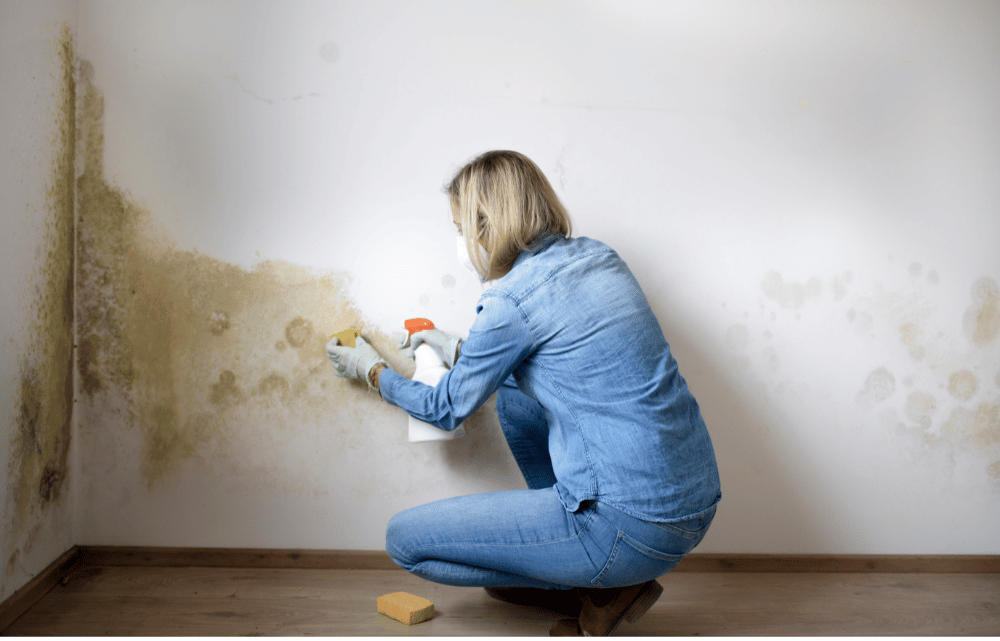By staff of Forum Health Vienna
Over the past few years, the awareness of toxic mold’s effect on human health has increased dramatically. In this article, we will explore the differences between molds, mold spores, and mycotoxins. We’re also going to explore the symptoms of mold illness and how it can be prevented.
What are Molds?
Molds are microscopic fungi that live on plant and animal matter. Outdoors, molds play a crucial role in breaking down dead leaves, plants, and trees. Molds thrive in the presence of moisture and air. Consequently, they can also be found indoors where this condition is met – such as on paper products, ceiling tiles, bathroom walls, drywall, and carpet. There are over 100,000 different types of molds, and they reproduce by making mold spores.
What are Mold Spores?
Mold spores are tiny, lightweight spores produced by spores that travel in the air. You can think of them as mold seeds. By floating in the air, they can survive in harsh and dry environments (where mold may not survive). However, when these spores land on damp surfaces in your home, they can start to grow. That’s why moisture control is significant in preventing mold growth because getting rid of mold spores is difficult.
What are Mycotoxins?
Mycotoxins are toxic compounds that are naturally produced by certain types of molds. When released into the air, these toxic compounds can find their way into the body through various ways, including inhalation, through the skin, or ingestion of mold-contaminated food.
In the body, the adverse health effects of mycotoxins stem from the production of pro-inflammatory cytokines. Cytokines are small proteins that aid in coordinating immune responses. But with the presence of mycotoxin, the production of pro-inflammatory cytokines results in an abnormal immune response.
What is Mold Illness?
Mold illness is an inflammation within the body caused by an immune system that has gone haywire. Mold illness is a subcategory of biotoxin illness called Chronic Inflammatory Response Syndrome (CIRS).
Most people develop mold illness upon prolonged exposure to water-damaged buildings. Water damages can be caused by water leaks, construction defects, inadequate caulking, among many others. The Occupational Safety and Health Administration (OHSA) estimates that one-in-four US buildings are water damaged. These damp surfaces promote the growth of bacteria, fungi, and mold.
Mold in the Human Body
While almost everyone becomes ill when exposed to high biotoxins levels, most people recover on their own once the exposure is discontinued. This happens through the detoxification system that identifies the biotoxins as harmful and eliminates them.
However, human leukocyte antigen (HLA) genes present in some people prevent their body system from recognizing the biotoxins. Consequently, the biotoxins trigger a chronic inflammatory response, which then devolves into CIRS. According to research, about 25% of the population has the HLA-DR gene.
Common Symptoms of Mold Illness
Contrary to what many people believe, mold illness is not an allergy. It’s an illness that can result in serious respiratory issues, nasal drainage, and even skin issues if left untreated. Several symptoms are associated with CIRS – both on a physical and emotional level. Here are some of them:
- Fatigue and weakness
- Vertigo
- Metallic taste
- Tremors
- Headache
- Light sensitivity
- Blurred vision
- Blurred vision
- Sinus problems
- Cough
- Abdominal pain
- Joint pain
- Diarrhea
- Appetite swings
- Memory issues
- Concentration issues
- Disorientation
- Mood swings
- Anxiety and depression
- Static shocks and many more.
Why CIRS is Frequently Missed or Misdiagnosed
When you combine the fact that about 25 percent of the population is susceptible to mold illness with the prevalence of water-damaged buildings, it’s no surprise that there’s been an increase in inflammatory diseases in the past few decades arising from CIRS.
Unfortunately, most patients with mold illness are not properly diagnosed because conventional doctors do not routinely look for it. Furthermore, mold illness shares similar symptoms with many other conditions – like myalgic encephalomyelitis, fibromyalgia, post-treatment Lyme syndrome, irritable bowel syndrome, attention deficit disorder, multiple sclerosis – often leading to a mistaken diagnosis.
Testing for Mold Exposure
Diagnosing mold illness can be difficult for reasons discussed earlier. However, there are certain things doctors look for to diagnose if a patient has CIRS. They include:
- History, signs, and symptoms that are consistent with biotoxin exposure.
- A genetic predisposition to CIRS based on the identification of an HLA-susceptible haplotype.
- Abnormalities documented by visual contrast sensitivity (VCS) testing. This is effective because biotoxins affect the optic nerves, decreasing the ability to detect visual contrast.
- Biomarkers that indicate abnormalities consistent with CIRS.
Preventing Mold Illness
The best way to prevent mold illness is to minimize biotoxins in your home. This can be achieved by reducing moisture and improving air quality. Here are some tips to bear in mind:
- Fix all leaky pipes as soon as possible.
- Use detergent and water to scrub mold off hard surfaces.
- Clean and repair your roof gutters regularly.
- Clean your air conditioning pans.
- Don’t use carpets in areas with high moisture, like in your bathroom.
- Maintain an indoor humidity of 30 to 50 percent.
- Use a high-efficiency particulate air (HEPA) filter to remove airborne toxins.
Contact us here today for more information.






